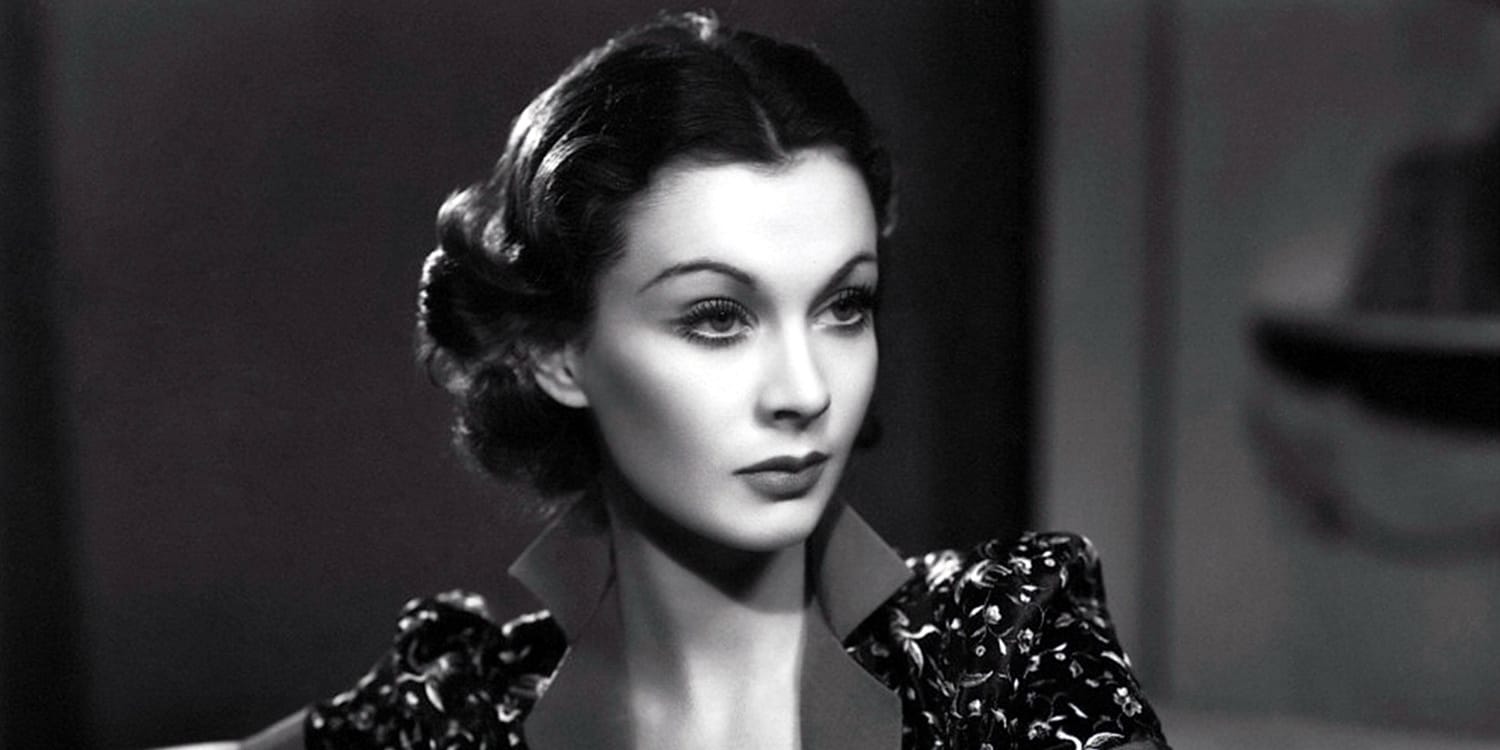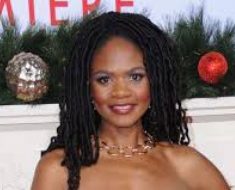
Vivian Mary Hartley net worth is $10 Million. Also know about Vivian Mary Hartley bio, salary, height, age weight, relationship and more …
Vivian Mary Hartley Wiki Biography
Vivian Mary Hartley was born on the 5th November 1913, in Darjeeling, India, and was an actress who appeared in 20 film and television productions over a period of 30 years. Leigh gained fame for the role of Scarlett O’Hara in the movie “Gone with the Wind” (1939), for which she won an Oscar. Leigh was active in the entertainment industry from 1920 to 1967, when she passed away.
How rich was the actress? Authoritative sources estimated that the overall size of Vivien Leigh’s net worth was as much as $10 million, as of the data presented in the middle of 2017.
To begin with, Vivien Leigh was the daughter of rich stockbroker Ernest Hartley and Gertrude Yackjee. She was born in India where she spent the first six years of her life. In 1920, the family left Darjeeling and returned to England. Leigh was sent to a Catholic boarding school for the next eight years. Then, she studied drama at the Royal Academy of Dramatic Art in London.
Vivien had appeared on stage with her mother when she was three, but it wasn’t until 1934 that she worked in her first film – “Things Are Looking Up”. The film producer Alexander Korda saw her in the play “The Mask of Virtue” (1935) and gave her a contract for ten British films and she starred in six of them, and then went to Hollywood in 1938. Myron Selznick was thrilled by the actress Vivien, who was still unknown in the USA. She was offered the famous role of Scarlett O’Hara, even though Leigh had to take speech lessons to learn the southern US state’s accent. In addition, she took singing and ballet lessons to improve voice and attitude. During the filming of “Gone With The Winds”, the script was constantly rewritten; there had never been such a large scale production in Hollywood that brought such enormous work to the producers, the three directors, the actors and technical crew. In 1940, she received an Oscar for her role as the Best Actress, afterward which the actress returned to England, her net worth and reputation well established.
In 1947, Leigh signed the contract for shooting “Anna Karenina”. Although she was severely depressed and psychotic, and suffered from excessive alcohol consumption, she loved the role of Anna. In the autumn of 1949, Leigh played the role of Blanche in the Hollywood adaptation of the play “A Streetcar Named Desire” alongside Marlon Brando. Thus, Leigh won her second Oscar as the Best Actress.
From 1950 on, Leigh was often sick and suffered several nervous breakdowns. She went into psychiatric treatment, and she was often forced to stop shooting because of her health. She also suffered from severe memory problems and could no longer perform regularly in the theatre. In the years 1960 – 1961, Vivien Leigh sank deeper and deeper into depression. She also drank a lot, but still managed to be successful on the stage. In 1960, she began the shooting “The Roman Spring of Mrs. Stone” and for her portrayal in the film, she received good reviews, which helped her health so much that she wanted to perform again. In 1963, she was honoured with a Tony Award for starring in the musical “Tovarich”, the performances, however, turned out to be so exhausting that she suffered burnout, and had to go into a psychiatric clinic again. From then on, she was taken care of and accompanied by a nurse. In 1965, she toured with the play “Ivanov” by Anton P. Chekhov through England and the US, adding steadily to her net worth.
Finally, in the personal life of the actress, Leigh and Herbert Leigh Holman married in 1932, and the following year their daughter Suzanne was born, but they divorced in 1940. Shortly afterwards, she married actor Laurence Olivier, but they divorced in 1960. From then until her death she was in a relationship with John Merivale. On the 7th July 1967, John Merivale found her dead on the floor of her bedroom in London, England – the cause of death was tuberculosis. Her ashes were scattered on the pond of their last residence, Tickerage Mill.
IMDB Wikipedia “A Yank at Oxford” (1938) “Duel of Angels” (1960) “Fire Over England” (1937) “Hamlet” (1937) “Richard III” (1948) “The Mask of Virtue” (1935) “Tovarich (1963) $10 million 1913 1913-11-5 1952 1967-07-08 5′ 3½” (1.61 m) A Streetcar Named Desire (1951) Academy Award for Best Actress (1940 Actress Alexander Korda Anna Karenina (1948) BAFTA Award for Best British Actress (1953) British British India. [now India] Caesar and Cleopatra (1945) Darjeeling David O. SelznickMyron Selznick Gone with the Wind (1939) Herbert Leigh Holman Herbert Leigh Holman (m. 1932–1940) Laurence Olivier (m. 1940–1961) New York Film Critics Circle Award for Best Actress November 5 Scorpio Ship of Fools (1965) Soundtrack Suzanne Farrington That Hamilton Woman (1941) The Crystal Star Tony Award for Best Lead Actress in a Musical (1963) Venice Film Festival awards Vivian Mary Hartley Vivien Leigh Net Worth Volpi Cup for Best Actress Volpi Cup for Best Actress (1951 Waterloo Bridge (1940) West Bengal
Vivian Mary Hartley Quick Info
| Full Name | Vivien Leigh |
| Net Worth | $10 Million |
| Date Of Birth | November 5, 1913, Darjeeling, West Bengal, British India. |
| Died | July 8, 1967, (age 53), London, United Kingdom |
| Height | 5′ 3½” (1.61 m) |
| Profession | Stage and film actress |
| Education | Royal Academy of Dramatic Art in London |
| Nationality | British |
| Spouse | Herbert Leigh Holman (m. 1932 – 1940), Laurence Olivier (m. 1940 – 1961) |
| Children | Suzanne Farrington |
| Parents | Ernest Hartley, Gertrude Yackjee |
| Partner | John Merivale (1959 – 1967, her death) |
| IMDB | http://www.imdb.com/name/nm0000046 |
| Allmusic | https://www.allmusic.com/artist/vivien-leigh-mn0001352938 |
| Awards | Academy Award for Best Actress (1940, 1952), Tony Award for Best Lead Actress in a Musical (1963), New York Film Critics Circle Award for Best Actress, BAFTA Award for Best British Actress (1953), Volpi Cup for Best Actress (1951, Venice Film Festival Awards), The Crystal Star |
| Nominations | The 16th greatest female movie star of classic Hollywood cinema (1999, American Film Institute) |
| Movies | “The Mask of Virtue” (1935), “Fire Over England” (1937), “A Yank at Oxford” (1938), “Gone with the Wind” (1939), “That Hamilton Woman” (1941), “Caesar and Cleopatra” (1945), “A Streetcar Named Desire” (1951), “Anna Karenina” (1948), “Ship of Fools” (1965) |
| TV Shows | “Tovarich (1963), “The Mask of Virtue” (1935), “Hamlet” (1937), “Richard III” (1948), “Duel of Angels” (1960) |
Vivian Mary Hartley Trademarks
- Black hair and soft green eyes
- Perhaps best known for her Oscar-winning roles in Gone with the Wind (1939) and A Streetcar Named Desire (1951)
- Often played women who will go to great lengths to achieve their desires
- Raised right eyebrow and cat-like smile
Vivian Mary Hartley Quotes
- Comedy is much more difficult than tragedy – and a much better training, I think. It’s much easier to make people cry than to make them laugh.
- I cannot let well enough alone. I get restless. I have to be doing different things. I am a very impatient person and headstrong. If I’ve made up my mind to do something, I can’t be persuaded out of it.
- Who could quarrel with Clark Gable? We got on well. Whenever anyone on the set [of Gone with the Wind (1939)] was tired or depressed, it was Gable who cheered that person up. Then the newspapers began printing the story that Gable and I were not getting on. This was so ridiculous it served only as a joke. From that time on, the standard greeting between Clark and myself became, “How are you not getting on today?”
- Most of us have compromised with life. Those who fight for what they want will always thrill us.
- I’m not a film star; I am an actress. Being a film star is such a false life, lived for fake values and for publicity.
- [on Warren Beatty] He has the kind of magnetic sensuality you could light torches with.
- Actresses go on for a long time and there are always marvelous parts to play.
- Am I finished with Hollywood? Good heavens, no! I shall certainly go back there if there is a film to make.
- All day long you’re really leading up to the evening’s performance. To time everything correctly, you have to take care of yourself – which is a very difficult thing to do, because it’s highly emotional
- [on Alexander Korda] Alex was like a father to us – we went to see him with every little problem we had. We usually left convinced that he had solved it – or that we’d got our own way.
- [when asked to take over Joan Crawford’s role in Hush…Hush, Sweet Charlotte (1964)] No, thank you. I can just about stand looking at Joan Crawford’s face at six o’clock in the morning, but not Bette Davis’.
- Scorpios burn themselves out and eat themselves up and they are careless about themselves – like me. I swing between happiness and misery and I cry easily. I am a mixture of my mother’s determination and my father’s optimism. I am part prude and part non-conformist and I say what I think and don’t dissemble. I am a mixture of French, Irish and Yorkshire, and perhaps that’s what it all is.
- Some critics saw fit to say that I was a great actress. I thought that was a foolish, wicked thing to say because it put such an onus and such a responsibility onto me, which I simply wasn’t able to carry.
- [to critics about her reviews for “The Mask of Virtue” (1935), her second play on the London stage] It’s much easier to make people cry than to make them laugh.
Vivian Mary Hartley Important Facts
- £65,000
- $100,000
- £35,000
- $100,000
- $25,000
- Although she is British, she won both her Oscars for portraying American southern belles.
- Her only child, daughter Suzanne Farrington, died on March 1, 2015 at age 81.
- Had three grandsons: Neville Farrington (born December 4, 1958), Jonathan Farrington (born May 13, 1961) and Rupert Farrington (born August 31, 1962).
- Gave birth to her only child at age 19, a daughter named Suzanne Mary Holman (aka Suzanne Farrington) on October 10, 1933 in a London nursing home. Child’s father is her now ex-first ex-husband, Herbert Holman.
- Is one of 11 actresses who won the Best Actress Oscar for a move that also won the Best Picture Oscar (she won for Gone with the Wind (1939)). The others are Claudette Colbert for It Happened One Night (1934), Luise Rainer for The Great Ziegfeld (1936), Greer Garson for Mrs. Miniver (1942), Louise Fletcher for One Flew Over the Cuckoo’s Nest (1975), Diane Keaton for Annie Hall (1977), Shirley MacLaine for Terms of Endearment (1983), Jessica Tandy for Driving Miss Daisy (1989), Jodie Foster for The Silence of the Lambs (1991), Gwyneth Paltrow for Shakespeare in Love (1998) and Hilary Swank for Million Dollar Baby (2004).
- Along with Glenda Jackson and Dame Maggie Smith she is one of only three British actresses to have won an Academy Award on two occasions: Leigh won Best Actress for Gone with the Wind (1939) and A Streetcar Named Desire (1951) while Jackson won Best Actress for Women in Love (1969) and A Touch of Class (1973) and Smith won Best Actress for The Prime of Miss Jean Brodie (1969) and Best Supporting Actress for California Suite (1978). Although Elizabeth Taylor – who won Best Actress for BUtterfield 8 (1960) and Who’s Afraid of Virginia Woolf? (1966) – was born in London, her parents were American and she was raised in the United States from the age of three.
- Was the 14th actress to receive an Academy Award; she won the Best Actress Oscar for Gone with the Wind (1939) at The 12th Academy Awards on February 29, 1940.
- Is one of 14 Best Actress Oscar winners to have not accepted their Academy Award in person, Leigh’s being for A Streetcar Named Desire (1951). The others are Katharine Hepburn, Claudette Colbert, Joan Crawford, Judy Holliday, Anna Magnani, Ingrid Bergman, Sophia Loren, Anne Bancroft, Patricia Neal, Elizabeth Taylor, Maggie Smith, Glenda Jackson and Ellen Burstyn.
- For her performance as Blanche DuBois in A Streetcar Named Desire (1951), she won the first British Academy Award for Best Actress at the newly inaugurated BAFTA Awards ceremony in 1953.
- Became pregnant twice (in 1944 and 1955) during her marriage to Laurence Olivier; she suffered miscarriages on both occasions.
- She died after collapsing at home from complications from an attack of tuberculosis on July 7, 1967. That evening lights of West End theater marquees were kept dark for an hour in her honor.
- Returned to work sixteen months after giving birth to her daughter Suzanne Farrington in order to begin performing in the stage production entitled “The Green Sash”.
- Stepmother of Tarquin Olivier.
- Was offered the role of Alice Aisgill in Room at the Top (1959), which she turned down. Simone Signoret was cast instead and she went on to receive a Best Actress Oscar for her performance.
- The nickname Vivling was given to her by her father. It’s a combination of her name and the word darling.
- After Joan Crawford quit filming Hush…Hush, Sweet Charlotte (1964), Leigh was offered her role which she turned down. Olivia de Havilland, Leigh’s co-star in Gone with the Wind (1939) was then offered and accepted the role.
- When making Gone with the Wind (1939), super macho director Victor Fleming wanted Scarlett, for at least once in the film, to look like his hunting buddy Clark Gable’s type of woman. So, when wearing the stunning low-cut burgundy velvet dress with rhinestones that Scarlett wears to Ashley Wilkes’ birthday party in the second half of the film, to achieve the desired cleavage for Fleming, Walter Plunkett had to tape Vivien Leigh’s breasts together.
- As of 2013, she is only one of six actors who have a 2-0 winning record when nominated for an acting Oscar. The others are Luise Rainer for The Great Ziegfeld (1936) and The Good Earth (1937); Helen Hayes for The Sin of Madelon Claudet (1931) and Airport (1970); Kevin Spacey for The Usual Suspects (1995) and American Beauty (1999); Hilary Swank for Boys Don’t Cry (1999) and Million Dollar Baby (2004); and Christoph Waltz for Inglourious Basterds (2009) and Django Unchained (2012).
- Was the first British actress to receive an Academy Award. She won the Best Actress Oscar for Gone with the Wind (1939) in February 1940.
- Had four great-grandchildren: Ashua, Amy, Sophie and Tessa. The great-grandchildren, the girls in particular, bear a striking resemblance to Suzanne.
- Was close friends with Rachel Kempson, the mother of Oscar-winning actress Vanessa Redgrave.
- Despite her legendary stature, Leigh made fewer than twenty films in her career.
- Her father was a full-blooded Englishmen, while her mother was of French and Irish ancestry.
- Was obsessed with hiding her large hands. Gloves were a favorite cover-up, she owned more than 150 pairs. Interestingly enough, one of the frequent descriptions of Vivien’s most famous character Scarlett O’Hara in the novel Gone with the Wind (1939) is that she has extremely small hands.
- Eventually, Vivien needed shock therapy to control her manic depression. Sometimes, she would go on stage just hours after her treatments, without missing a beat in her performance.
- Her performance as Scarlett O’Hara in Gone with the Wind (1939) is ranked #3 on Premiere magazine’s 100 Greatest Movie Characters of All Time.
- Peter Finch was discovered by Laurence Olivier in 1948 when Olivier and his theatrical company, which included wife Leigh, were conducting a tour of Australia, Olivier signed the young Aussie to a personal contract and Finch became part of Olivier’s theatrical company. He then proceeded to cuckold his mentor and employer by bedding Leigh. Olivier was personally humiliated but ever the trouper, he kept the talented Finch under contract after having brought him back to England, where Finch flourished as an actor. Finch and Leigh carried on a long affair, and since Leigh was bipolar and her manic-depression frequently manifested itself in nymphomania, some speculate that Olivier subconsciously might have been grateful for Finch as he occupied Leigh’s hours and kept her out of worse trouble and Olivier from even worse embarrassment. Their on-again, off-again affair reportedly reached a crisis point on the movie Elephant Walk (1954), when they had renewed their affair. However, the instability of their relationship allegedly triggered a nervous breakdown in Leigh, and Olivier had to step in to take care of her.
- Laurence Olivier wrote in his autobiography, “Confessions of an Actor”, that sometime after World War II, Leigh announced calmly that she was no longer in love with him, but loved him like a brother. Olivier was emotionally devastated. What he did not know at the time was that Leigh’s declaration — and her subsequent affairs with multiple partners — was a signal of the bipolar disorder that eventually disrupted her life and career. Leigh had every intention of remaining married to Olivier, but was no longer interested in him romantically. Olivier himself began having affairs (including one with Claire Bloom in the 1950s, according to Bloom’s own autobiography) as Leigh’s eye and amorous intentions wandered and roamed outside of the marital bedchamber. Olivier had to accompany Leigh to Hollywood in 1950 in order to keep an eye on her and keep her out of trouble, to ensure that her manic-depression did not get out of hand and disrupt the production of A Streetcar Named Desire (1951). In order to do so, he accepted a role in William Wyler’s Carrie (1952) that was shot at the same time as Streetcar. The Oliviers were popular with Hollywood’s elite, and Elia Kazan and Marlon Brando both liked “Larry” very much (that was the reason that Brando gave in his own autobiography for not sleeping with Leigh, whom he thought had a superior posterior — he could not raid Olivier’s “chicken coop” as “Larry was such a nice guy”.) None of them knew the depths of the anguish he was enduring as the caretaker of his mentally ill wife. Brando said that Leigh was superior to Jessica Tandy — the original stage Blanche DuBois — as she was Blanche. Ironically, Olivier himself had directed Leigh in the role on the London stage.
- She was supposed to star in the Paramount film Elephant Walk (1954) with Peter Finch and Dana Andrews, but after appearing in a few scenes she was replaced by Elizabeth Taylor. The reasons for Leigh’s dismissal were rumored to be her difficult nature, having just been diagnosed as a manic-depressive. Further complications may have erupted because of an affair she had with co-star Finch while she was still married to Laurence Olivier, and Leigh and Olivier were still married in 1954.
- She was awarded a Star on the Hollywood Walk of Fame at 6773 Hollywood Boulevard in Hollywood, California on February 8, 1960.
- Was named #16 Actress on The American Film Institute’s 50 Greatest Screen Legends.
- Won Broadway’s 1963 Tony Award as Best Actress (Musical) for “Tovarich”.
- Although she was a British subject for her whole life, her ancestry was French and Irish.
- Had an affair with actor Peter Finch that nearly ended her marriage to Laurence Olivier. The movie The V.I.P.s (1963) is based on an incident from Leigh’s and Olivier’s marriage, when she was about to leave him for Finch but Olivier wooed her back.
- She desperately wanted to play the second Mrs. De Winter in Rebecca (1940) opposite her husband Laurence Olivier, but producer David O. Selznick thought the role would dilute her value as a Scarlett O’Hara type and cast Joan Fontaine instead. His decision severely strained her professional relationship with Selznick; neither she nor Olivier ever appeared in one of his films again. Fontaine won her first Academy Award nomination in the role.
- Kept Laurence Olivier’s photograph beside her bed and on her dressing table even after they divorced. Until her death, she was addressed as “Lady Olivier”.
- Reportedly used one of her two Oscars to doorstop her bathroom.
- Godmother of actress Juliet Mills and Suzanna Leigh.
- She took her then husband’s first name (Leigh) as her last name when she began acting professionally.
- Her favorite role was that of Myra Lester, which she played in Waterloo Bridge (1940).
- Pictured on one of four 25¢ US commemorative postage stamps issued March 23, 1990 honoring classic films released in 1939. The stamp features Clark Gable and Leigh as Rhett Butler and Scarlett O’Hara from Gone with the Wind (1939). The other films honored were Beau Geste (1939), Stagecoach (1939) and The Wizard of Oz (1939).
- Was offered the supporting role of Isabella in Wuthering Heights (1939), but decided to gamble and hold out for the lead role of Cathy. Director William Wyler thought she was crazy to pass up the opportunity, telling her, “You will never get a better part than Isabella for an American debut.” Shortly after, she landed the plum role of Scarlett O’Hara.
- Claimed that when she tested for Gone with the Wind (1939), the costume was still warm from the actress who preceded her.
- A lover of cats, especially Siamese.
- Married Laurence Olivier at San Ysidro Ranch in Santa Barbara on August 31, 1940, with Katharine Hepburn as matron of honor; they honeymooned on actor Ronald Colman’s yacht.
- According to legend, Myron Selznick introduced Vivien to his brother – Gone with the Wind (1939) producer David O. Selznick – with the words, “Hey, genius! Meet your Scarlett.”.
- The producer of the 1935 play “The Mask of Virtue” suggested to her that she change the ‘a’ in her first name to an ‘e’ from “Vivian” to “Vivien”.
- Laurence Olivier’s first wife, Jill Esmond, named Vivien as co-respondent in her February 1940 divorce from Olivier on grounds of adultery. Vivien would name Joan Plowright – Olivier’s next and last wife – as co-respondent in her 1960 divorce from Olivier, also on grounds of adultery.
- Scarlett O’Hara might have been played by an actress called ‘April Morn’, a stage name she briefly considered before settling on Vivien Leigh.
- After cremation at Golders Green, London, her ashes were scattered on the mill pond at her home, Tickerage Mill, at Blackboys in Sussex.
- Gertrude Hartley, while awaiting the birth of her child in Darjeeling, spent 15 minutes every morning gazing at the Himalayas in the belief that their astonishing beauty would be passed to her unborn child.
- A heavy smoker, Leigh was smoking almost four packs a day during filming of Gone with the Wind (1939).
- Lived with John Merivale from 1959 until her death in 1967.
- Suffered from bipolar disorder (referred to as “manic depression” at the time of her diagnosis).
- Ranked #48 in Empire (UK) magazine’s “The Top 100 Movie Stars of All Time” list. [October 1997]
Vivian Mary Hartley Filmography
| Title | Year | Status | Character | Role |
|---|---|---|---|---|
| Ship of Fools | 1965 | Mary Treadwell | Actress | |
| The Roman Spring of Mrs. Stone | 1961 | Karen Stone | Actress | |
| ITV Play of the Week | 1959 | TV Series | Sabina | Actress |
| The Deep Blue Sea | 1955 | Hester Collyer | Actress | |
| A Streetcar Named Desire | 1951 | Blanche DuBois | Actress | |
| Anna Karenina | 1948 | Anna Karenina | Actress | |
| Caesar and Cleopatra | 1945 | Cleopatra | Actress | |
| That Hamilton Woman | 1941 | Emma Lady Hamilton | Actress | |
| Waterloo Bridge | 1940 | Myra | Actress | |
| 21 Days Together | 1940 | Wanda | Actress | |
| Gone with the Wind | 1939 | Scarlett – Their Daughter | Actress | |
| Sidewalks of London | 1938 | Liberty aka Libby | Actress | |
| A Yank at Oxford | 1938 | Elsa Craddock | Actress | |
| Storm in a Teacup | 1937 | Victoria Gow | Actress | |
| Dark Journey | 1937 | Madeleine Goddard | Actress | |
| Fire Over England | 1937 | Cynthia | Actress | |
| Gentlemen’s Agreement | 1935 | Phil Stanley | Actress | |
| Things Are Looking Up | 1935 | Schoolgirl (uncredited) | Actress | |
| Look Up and Laugh | 1935 | Marjorie Belfer | Actress | |
| The Village Squire | 1935 | Rose Venables | Actress | |
| Teresa la ladra | 1973 | performer: “Auld Lang Syne” – uncredited | Soundtrack | |
| A Streetcar Named Desire | 1951 | performer: “It’s Only a Paper Moon” 1933 – uncredited | Soundtrack | |
| Waterloo Bridge | 1940 | performer: “It’s a Long, Long Way to Tipperary” 1912, “Candlelight Waltz” 1940, “Auld Lang Syne” – uncredited | Soundtrack | |
| Gone with the Wind | 1939 | performer: “Ben Bolt Oh Don’t You Remember” 1848 – uncredited | Soundtrack | |
| Fire Over England | 1937 | performer: “The Spanish Lady’s Love” ncredited | Soundtrack | |
| Round the Film Studios | 1937 | TV Series narrative script – 1 episode | Writer | |
| Dieter & Andreas | 1989 | Short grateful acknowledgment | Thanks | |
| The Ed Sullivan Show | 1963 | TV Series | Singer | Self |
| The 17th Annual Tony Awards | 1963 | TV Special | Herself – Winner | Self |
| The Jack Paar Tonight Show | 1960 | TV Series | Herself | Self |
| Today | 1960 | TV Series | Herself | Self |
| The 14th Annual Tony Awards | 1960 | TV Special | Herself – Presenter: Best Play & Best Director (Dramatic) | Self |
| Small World | 1958 | TV Series | Herself | Self |
| Korda Interviews | 1956 | TV Movie documentary | Interviewee | Self |
| Cavalcade of the Academy Awards | 1940 | Documentary short | Herself | Self |
| Round the Film Studios | 1937 | TV Series | Herself – Presenter | Self |
| Charmed Lives: A Family Romance | Documentary pre-production | Herself | Archive Footage | |
| Leslie Howard: The Man Who Gave a Damn | 2016 | Documentary | Archive Footage | |
| The Drunken Peasants | 2016 | TV Series | Herself | Archive Footage |
| Love, Hate & Propaganda: The Cold War | 2011 | TV Series documentary | Scarlett O’Hara in ‘Gone with the Wind’ | Archive Footage |
| My Week with Marilyn: The Untold Story of an American Icon | 2011 | Video documentary short | Herself (uncredited) | Archive Footage |
| 20 to 1 | 2010 | TV Series documentary | Scarlet O’Hara | Archive Footage |
| Der Klang Hollywoods – Max Steiner & seine Erben | 2009 | TV Movie documentary | Herself | Archive Footage |
| To Oz! The Making of a Classic | 2009 | Video documentary short | Herself | Archive Footage |
| 1939: Hollywood’s Greatest Year | 2009 | TV Movie documentary | Archive Footage | |
| Spisok korabley | 2008 | Documentary | Lady Hamilton | Archive Footage |
| Today Tonight | 2007 | TV Series | Scarlet O’Hara | Archive Footage |
| Stardust: The Bette Davis Story | 2006 | TV Movie documentary | Herself as Scarlett O’Hara | Archive Footage |
| Corazón de… | 2005 | TV Series | Archive Footage | |
| Unsere Besten | 2004 | TV Series | Scarlet O’Hara | Archive Footage |
| The Prince, the Showgirl and Me | 2004 | TV Movie documentary | Archive Footage | |
| American Masters | 2003 | TV Series documentary | Blanche DuBois | Archive Footage |
| Living Famously | 2003 | TV Series documentary | Archive Footage | |
| Biography | 1998-2001 | TV Series documentary | Herself / Blanche Du Bois | Archive Footage |
| Larry and Vivien: The Oliviers in Love | 2001 | TV Movie documentary | Archive Footage | |
| Beyond Tara: The Extraordinary Life of Hattie McDaniel | 2001 | TV Movie documentary | Scarlett O’Hara | Archive Footage |
| Hollywood Remembers Lee Marvin | 2000 | TV Movie documentary | Herself / Mary Treadwell | Archive Footage |
| Sir John Mills’ Moving Memories | 2000 | Video documentary | Herself | Archive Footage |
| Legends | 2000 | TV Series documentary | Herself | Archive Footage |
| ABC 2000: The Millennium | 1999 | TV Special documentary | Archive Footage | |
| Classified X | 1998 | TV Movie documentary | Herself | Archive Footage |
| Glorious Technicolor | 1998 | TV Movie documentary | Herself | Archive Footage |
| Intimate Portrait | 1996 | TV Series documentary | Herself | Archive Footage |
| The Good, the Bad & the Beautiful | 1996 | TV Special documentary | Herself | Archive Footage |
| Legends of Entertainment Video | 1995 | Video documentary | Herself | Archive Footage |
| The First 100 Years: A Celebration of American Movies | 1995 | TV Movie documentary | Herself | Archive Footage |
| A Personal Journey with Martin Scorsese Through American Movies | 1995 | TV Movie documentary | Blanche Dubois, ‘A Streetcar Named Desire’ (uncredited) | Archive Footage |
| 100 Years at the Movies | 1994 | TV Short documentary | Herself | Archive Footage |
| Kleiner Mann ganz groß | 1994 | TV Movie documentary uncredited | Archive Footage | |
| That’s Entertainment! III | 1994 | Documentary | Performer in Clip from ‘Waterloo Bridge’ (uncredited) | Archive Footage |
| Mo’ Funny: Black Comedy in America | 1993 | TV Special documentary | Scarlett O’Hara | Archive Footage |
| The Tales of Helpmann | 1990 | Documentary | Herself | Archive Footage |
| The Wonderful Wizard of Oz: 50 Years of Magic | 1990 | TV Movie documentary | Herself | Archive Footage |
| Vivien Leigh: Scarlett and Beyond | 1990 | TV Movie documentary | Herself | Archive Footage |
| Darlings of the Gods | 1989 | TV Movie | Herself | Archive Footage |
| Murphy Brown | 1989 | TV Series | Herself / opening credits | Archive Footage |
| The Making of a Legend: Gone with the Wind | 1988 | TV Movie documentary | Herself – Cast Member in ‘Gone with the Wind’ | Archive Footage |
| The Golden Gong | 1985 | TV Movie documentary | Archive Footage | |
| Hollywood Out-takes and Rare Footage | 1983 | Documentary | Herself (uncredited) | Archive Footage |
| Great Performances | 1983 | TV Series | Herself | Archive Footage |
| Has Anybody Here Seen Canada? A History of Canadian Movies 1939-1953 | 1979 | TV Movie documentary | Herself (unconfirmed, uncredited) | Archive Footage |
| America at the Movies | 1976 | Documentary | Blanche DuBois | Archive Footage |
| That’s Entertainment, Part II | 1976 | Documentary | Clip from ‘Gone with the Wind’ (as Vivian Leigh) | Archive Footage |
| Brother Can You Spare a Dime | 1975 | Documentary | Herself | Archive Footage |
| Hollywood: The Dream Factory | 1972 | TV Movie documentary | Herself – film clips (uncredited) | Archive Footage |
| Hollywood: The Selznick Years | 1969 | TV Movie documentary | Actress ‘Gone with the Wind’ (uncredited) | Archive Footage |
| The Extraordinary Seaman | 1969 | Herself (uncredited) | Archive Footage | |
| The Screen Director | 1951 | Short | Herself (uncredited) | Archive Footage |
| Hollywood: Style Center of the World | 1940 | Documentary short | Herself | Archive Footage |
Vivian Mary Hartley Awards
| Year | Award | Ceremony | Nomination | Movie | Category |
|---|---|---|---|---|---|
| 1960 | Star on the Walk of Fame | Walk of Fame | Motion Picture | On 8 February 1960. At 6773 Hollywood Blvd. | Won |
| 1957 | Special Award | Sant Jordi Awards | A Streetcar Named Desire (1951) | Won | |
| 1953 | BAFTA Film Award | BAFTA Awards | Best British Actress | A Streetcar Named Desire (1951) | Won |
| 1952 | Oscar | Academy Awards, USA | Best Actress in a Leading Role | A Streetcar Named Desire (1951) | Won |
| 1951 | NYFCC Award | New York Film Critics Circle Awards | Best Actress | A Streetcar Named Desire (1951) | Won |
| 1951 | Volpi Award | Venice Film Festival | Best Actress | A Streetcar Named Desire (1951) | Won |
| 1940 | Oscar | Academy Awards, USA | Best Actress in a Leading Role | Gone with the Wind (1939) | Won |
| 1939 | NYFCC Award | New York Film Critics Circle Awards | Best Actress | Gone with the Wind (1939) | Won |
| 1960 | Star on the Walk of Fame | Walk of Fame | Motion Picture | On 8 February 1960. At 6773 Hollywood Blvd. | Nominated |
| 1957 | Special Award | Sant Jordi Awards | A Streetcar Named Desire (1951) | Nominated | |
| 1953 | BAFTA Film Award | BAFTA Awards | Best British Actress | A Streetcar Named Desire (1951) | Nominated |
| 1952 | Oscar | Academy Awards, USA | Best Actress in a Leading Role | A Streetcar Named Desire (1951) | Nominated |
| 1951 | NYFCC Award | New York Film Critics Circle Awards | Best Actress | A Streetcar Named Desire (1951) | Nominated |
| 1951 | Volpi Award | Venice Film Festival | Best Actress | A Streetcar Named Desire (1951) | Nominated |
| 1940 | Oscar | Academy Awards, USA | Best Actress in a Leading Role | Gone with the Wind (1939) | Nominated |
| 1939 | NYFCC Award | New York Film Critics Circle Awards | Best Actress | Gone with the Wind (1939) | Nominated |





